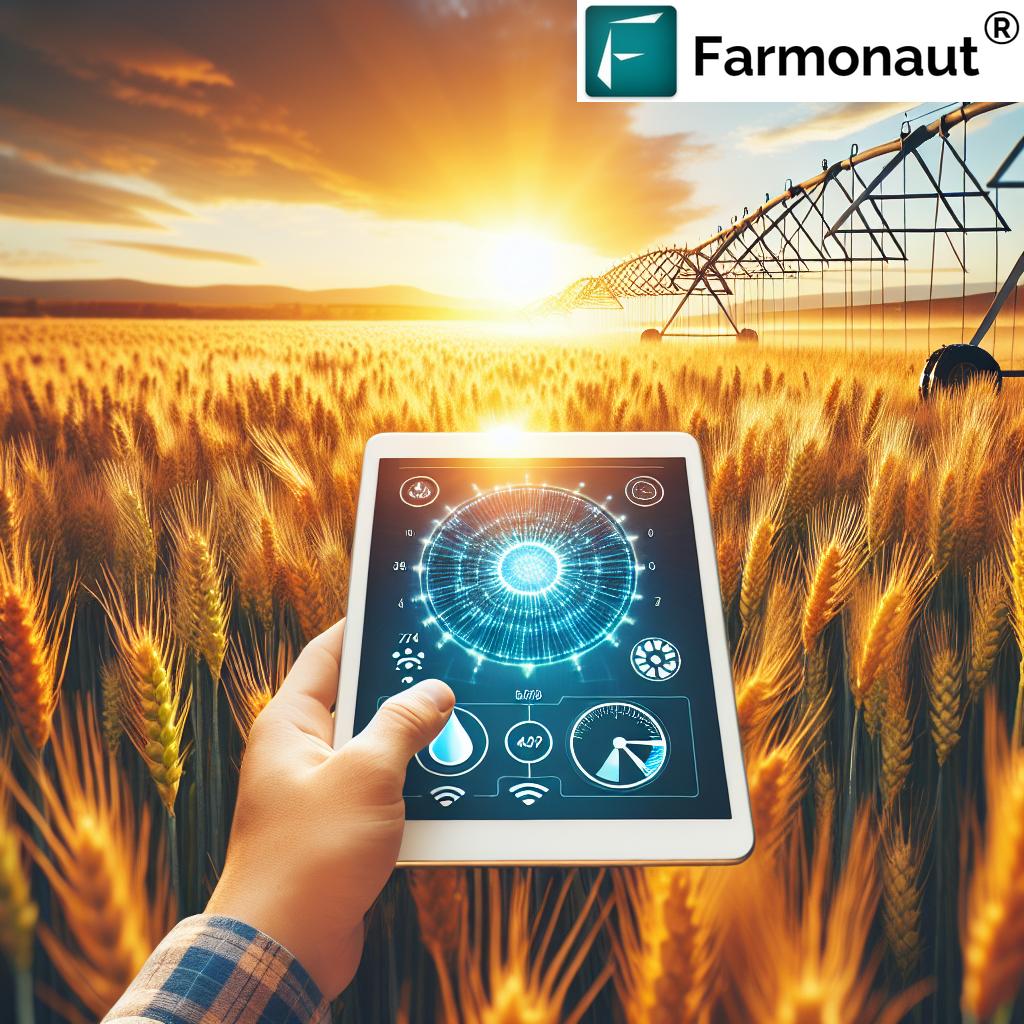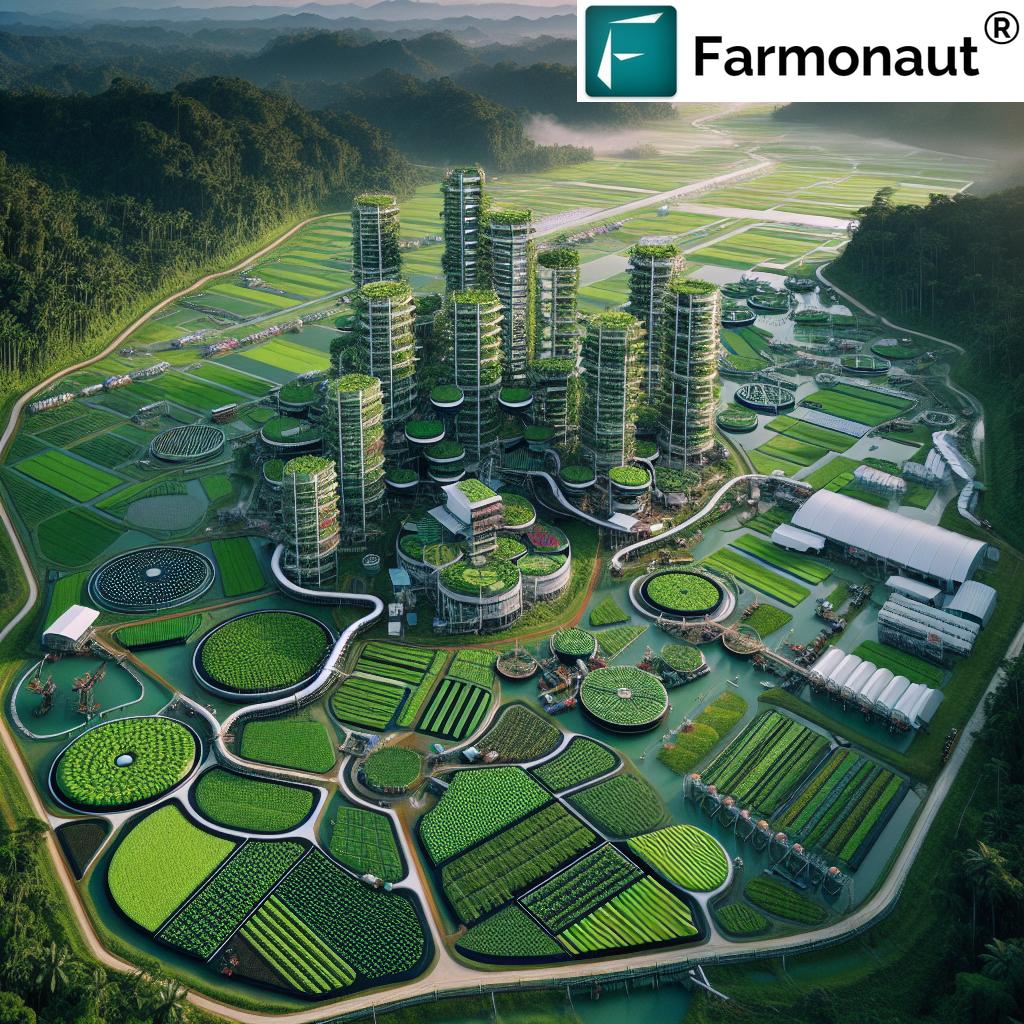China 4 Seasons Greenhouse Manufacturer: 2025 Breakthroughs
“By 2025, China is expected to produce over 60% of the world’s 4-seasons greenhouses, leading global innovation.”
China’s Dominance in Four Seasons Greenhouse Manufacturing
The concept of the 4 seasons greenhouse is transforming modern agriculture globally—making year-round, optimized crop production a commercial reality. Among all players in this rapidly evolving sector, Chinese manufacturers stand as recognized leaders in the design, technology, and affordability of greenhouses designed for continuous operation, regardless of external weather. These advanced structures are particularly sought after by both domestic and international farmers aiming to overcome climatic constraints and boost food security.
China’s strategic advantages stem from its robust supply chain for greenhouse materials, access to skilled labor, and advanced manufacturing infrastructure. This enables Chinese suppliers to deliver highly durable, full-featured greenhouses at remarkably low prices—while consistently meeting or exceeding global quality standards. The result? Widespread adoption of Chinese 4 seasons greenhouses is fundamentally changing the shape of global agriculture, resilient food production, and sustainability objectives worldwide.
Why is China the Leading 4 Seasons Greenhouse Manufacturer?
- Scale – With large-scale manufacturing facilities, China’s output dwarfs that of most competitors, supporting vast domestic and international demand.
- Innovation – Chinese manufacturers invest continually in technological enhancements such as modular design, climate automation, and material science.
- Affordability – Efficient production and low labor costs make possible China low price 4 seasons greenhouses without sacrificing quality.
- Global Reach – Distribution networks and supply chains enable rapid export to agricultural regions worldwide.
Understanding the 4 Seasons Greenhouse: Structure, Design, and Technology
What makes four seasons greenhouses distinct from traditional models? At the heart of this advanced agricultural technology is their ability to maintain optimal growing conditions for crops year-round. This is achieved by:
- Reducing dependency on climate
- Integrating smart temperature, humidity, and light controls
- Enhancing resource use efficiency
- Enabling continuous, high-yield food production
Whereas traditional greenhouses may be constrained by extreme winters or summers, often requiring extensive heating, cooling, and maintenance costs, modern 4 seasons greenhouses—the backbone of which are those manufactured in China—employ innovations that empower farmers in cold, arid, or unpredictable climates to grow vegetables, fruit, flowers, and herbs 365 days a year.
Key Features of China’s Four Seasons Greenhouse Structures
- Double-layered Polyethylene Films – Provides superior insulation and UV protection, reducing heating costs and sunlight damage.
- Tempered Glass Panels – Increases light diffusion while withstanding weather fluctuations and physical impacts.
- Robust Modular Frames – Enable scalability and easy assembly, crucial for export to remote or developing regions.
- Automated Microclimate Systems – Smart sensors and Internet of Things (IoT) devices optimize watering, ventilation, light, and temperature control.
Sustainability and Affordability: The Core of Chinese 4 Seasons Greenhouses
By leveraging advanced, yet cost-effective materials and streamlined supply chains, china 4 seasons greenhouse manufacturers can make high-quality year-round greenhouses accessible for small and medium-sized farmers globally, significantly lowering the barriers to entry for modern commercial farming. In the context of 2025 and beyond, this widespread adoption is a decisive solution—not only for climate resilience and food security but also for making sustainable agriculture the new global standard.
Materials and Technologies Used in China 4 Seasons Greenhouse Manufacturing
The leap from seasonal or traditional greenhouses to full-fledged four seasons agricultural powerhouses is enabled by a careful selection of state-of-the-art materials and integrated technologies. Here’s how Chinese manufacturers are setting the pace:
Advanced Materials in Chinese Four Seasons Greenhouses
-
Double-Layer Polyethylene Films
- Traps heat with an insulating air gap
- Reduces heating costs by up to 25% (aligns with sector-wide improvements by 2024)
- Offers anti-fog and anti-drip coatings for improved light diffusion
-
Tempered Glass
- Ensures high light transmission and safety under snow, hail, or physical strain
-
UV-Resistant Covers
- Preserves material life during intensive sun exposure
-
High-Durability, Modular Steel or Aluminum Frameworks
- Enables adaptability to various regions, weather, and crop types
Smart Technologies for Year-Round Crop Production
- Automated Ventilation and Shading—Efficient airflow and heat management, reducing energy expenditure
- Climate Sensors—Enable micro-adjustment of temperature, humidity, and CO2 levels
- IoT-based Watering Systems—Data-driven irrigation for optimized resource use
- LED Supplemental Lighting—Ensures constant photosynthesis during low-light seasons
How Are Chinese 4 Seasons Greenhouse Manufacturers Setting New Benchmarks for 2025?
Major Chinese players are rapidly moving toward AI-driven, fully autonomous greenhouse management platforms. These advancements, together with improved energy management, will set the sector’s standard in 2025 and beyond. Market analysts forecast that by this time, over 70% of newly manufactured Chinese greenhouses will be smart-ready, supporting sustainable, climate-resilient food production globally.
Here, product traceability plays a pivotal role. By tracking every element from greenhouse inputs to harvested goods via blockchain technology, modern farming operations are able to verify food safety, authenticity, and origin—demanded by global consumers and regulators alike.
Automation and Smart Tech Integration in Four Seasons Greenhouses
As we move deeper into the decade, automating greenhouse operations to optimize growth cycles, reduce labor, and enhance energy efficiency is no longer optional for commercial-scale operations. China 4 seasons greenhouse manufacturers are now integrating AI and IoT systems as standard features—reshaping competitive benchmarks in the sector.
What Smart Technologies are Shaping Chinese Four Seasons Greenhouses?
- IoT Sensors and Controls: Monitor and adjust temperature, CO2, humidity, and light intensity in real time.
- Automated Nutrient/Fertigation Systems: Deliver precisely metered fertilizer and water, maximizing crop health and resource savings.
- Cloud-Connected Monitoring Platforms: Allow farmers to remotely manage operations via app or browser dashboard.
- Integrated Energy Management: Solar panels and biomass heating systems reduce operational costs and carbon footprint, aligning with global sustainability goals.
This high level of technological integration makes Chinese greenhouses especially attractive for regions seeking resilient, scalable solutions for food production. The seamless fusion of climate control, vertical horticulture, and crop management platforms exemplifies a move toward precision agriculture that supports food security worldwide.
How Smart Tech Enhances Food Security and Yield
- Enables predictable, high-volume yields regardless of season or region
- Reduces reliance on manual labor, decreasing operational costs
- Improves resource efficiency by monitoring exact water, nutrient, and light needs
- Detects and addresses crop disease or stress early, minimizing loss
“China’s greenhouse technology advancements in 2024 have reduced energy consumption by 25% for year-round crop production.”
Cost Analysis: China 4 Seasons Greenhouse Manufacturer vs. Global Competitors
In today’s cost-driven market, the appeal of china low price 4 seasons greenhouse options cannot be overstated. China’s ability to manufacture at scale, optimize logistics, and source abundant materials results in greenhouses that are often 20%-35% less expensive than comparable structures from developed markets—while frequently offering more advanced features.
Cost Factors Favoring Chinese Greenhouse Manufacturers
- Efficient labor and automation at production sites—reducing per-unit cost
- Localized supply chains for steel, glass, polyethylene, sensors, and electronics
- Governmental support for agricultural technology exports—boosting international competitiveness
- Flexible, modular design—reducing shipping and installation costs, and simplifying scalability for small and large farms
Key Pricing Insights (2025, Estimated):
- China 4 Seasons Greenhouse Price Range: ~$30–$65 per m² (depending on features)
- European/American Greenhouse Price Range: ~$55–$120 per m² (comparable size/tech)
- Smart Tech Integration: Over 70% in new Chinese units (2025 forecast)
For farmers in emerging regions—or anywhere with rapidly shifting climate and weather—this affordability plus advanced features represents a transformative enabler of food security and profitability.
Impact on Agriculture, Food Security, and Sustainability
Beyond economics, the real impact of broad 4 seasons greenhouse adoption is revealed in what it means for agriculture, food security, and climate-resilient production worldwide. Here’s how:
-
Year-Round Food Production
- Eliminates reliance on imports during off-seasons
- Expands crop variety options—boosting nutrition and market value
-
Climate Resilience
- Protects against unpredictable frost, heat, drought, or heavy rainfall
-
Resource Optimization
- Advanced watering, lighting, and microclimate control systems reduce input use per kilogram of crop produced
-
Ecosystem Protection
- Modular and enclosed systems mean less pesticide and fertilizer run-off—supporting sustainable agriculture
Many farmers leverage platforms like satellite-driven crop loan and insurance verification to access financing for greenhouse investments. Accurate, remote satellite monitoring reduces risk for both farmers and lenders, accelerating the adoption of year-round, 4 seasons greenhouse technology.
The Role of China’s Four Seasons Greenhouses in Emerging Regions
Many regions facing harsh winters, erratic rainfall, or soil degradation are now reliant on Chinese four seasons greenhouses to improve yields and reduce production volatility. The flexibility in greenhouse sizes and technological sophistication makes it possible for smallholders as well as large-scale farmers to participate in the global market, ensuring greater food security and improved livelihoods.
Our commitment at Farmonaut is to support this function by offering carbon footprinting solutions, tracing and analyzing the sustainability performance of greenhouses and other farming infrastructure globally—empowering both compliance and eco-friendly food system goals.
Climate Resilience and Energy Innovations: 2025 and Beyond
With climate change causing increasing agricultural uncertainty, climate resilience is now the central requirement driving greenhouse design. China’s focus on efficient, low-emission heating and cooling solutions is setting international trends.
Top Energy Innovations in Chinese Four Seasons Greenhouse Technology
-
Solar-Assisted Heating and Cooling
- Reduces reliance on grid electricity and fossil fuels
- Powers climate controls directly from the greenhouse roof
-
Biomass Heating Units
- Use locally sourced organic waste to provide clean, renewable warmth throughout winter
-
High-Efficiency Thermal Insulation
- Traps heat more effectively during cold seasons, reducing ongoing energy spend
Advanced climate-adaptive designs are now standard in nearly all major china 4 seasons greenhouse manufacturers by 2025, ensuring sustainable food production regardless of even the most extreme external conditions.
Market Trends, Global Demand, and the 2025 Forecast
With global awareness of the need for sustainable farming, optimized resource use, and reliable food supply at an all-time high, the growth trajectory for china 4 seasons greenhouse manufacturers is exceptionally robust as we near 2025.
Global Demand and Expansion
- Wide export markets in Africa, the Middle East, Central Asia, Europe, and the Americas
- Government and NGO procurement to supply community and commercial farming initiatives
- Increasing demand for turnkey, smart-enabled greenhouse packages for commercial-scale food production
This expansion aligns with governmental drives in many nations to modernize agriculture and to reduce vulnerability to food shortages and climatic disruptions. As such, china low price 4 seasons greenhouse exports are forecast to account for well over 60% of new global installations by 2025.
To further support this growth, Farmonaut’s technologies—including fleet management—help businesses optimize logistics and sugar the process of deploying or operating multiple greenhouse installations at scale.
What to Expect Beyond 2025
- More Integration: New partnerships between greenhouse manufacturers and smart tech providers for seamless data-driven management.
- Advanced Materials: Broader use of composite structures, advanced films, and recycled components.
- Sustainability Requirements: Tightening global standards will make carbon monitoring, traceability, and climate data integration essential—highlighting the value of platform-based services like large-scale farm management.
- Decentralized Food Production: Empowerment of smallholder and local producers via affordable, tech-ready greenhouse solutions.



API Developer Docs
Farmonaut API
Farmonaut: Satellite Technology and the Future of Sustainable Farming
As the international agricultural sector embraces advanced greenhouses, Farmonaut empowers farmers, businesses, and governments worldwide with affordable and accessible satellite-driven insights. Our mission is to maximize both productivity and sustainability in greenhouse and open-field farming by leveraging multispectral data, AI-powered analytics, blockchain traceability, and resource optimization tools.
- Satellite-Based Monitoring: Our platform delivers real-time insights on crop health, water needs, and environmental conditions—enabling farmers to further optimize the potential of 4 seasons greenhouses and other infrastructure.
- Environmental Impact & Carbon Footprinting: Farmonaut’s monitoring tools measure the carbon footprint associated with greenhouse operations, helping businesses meet rigorous sustainability requirements and make data-driven decisions on improvement.
- Traceability and Blockchain: Using blockchain, we offer traceability solutions for greenhouse-grown food, assuring both authenticity and consumer trust in domestic and export markets.
- Scalability for All: Whether you manage a small farm or a vast commercial greenhouse business, Farmonaut’s modular, subscription-driven services enable you to scale your farm management as needs grow.
For developers seeking to enhance their agri-tech solutions with remote insights, find out more on our Farmonaut API documentation and integrations.
Feature Comparison Table of 4 Seasons Greenhouse Technologies (China vs. Global Competitors, 2025)
| Technology / Feature | China 4 Seasons Greenhouse Manufacturers (Estimated 2025 Specs) |
Global Competitors (Estimated 2025 Specs) |
Cost Efficiency (USD/m², est.) | Climate Adaptability (Rating: 1–5) |
Availability of Smart Tech Integration (% of New Builds, est.) |
|---|---|---|---|---|---|
| Double-Layer Polyethylene Films | Standard (2025), Advanced coatings, Anti-fog, Anti-drip | Available, mostly in premium offerings | $30–$65 | 5 | 70%+ |
| Tempered Glass Panels | Optional upgrade, High-durability, Light diffusing | Widespread, but at higher cost | $45–$75 | 4.5 | 60%+ |
| AI/IoT Automated Climate Controls | Standard in most new units | Frequent in high-end units | $48–$88 | 5 | 70–80% |
| Solar-Integrated Heating/Cooling | Optional; ~45% of new builds | Rare, mostly in Europe | $55–$85 | 5 | 45% |
| Blockchain Traceability | Supported via farm tech platforms | Emergent; <20% | n/a | n/a | 30% |
| Installation Time | Rapid (modular, pre-fab) | Moderate | n/a | 5 | n/a |
| Energy Efficiency (2024-2025 improvement) | 25% less vs. 2022 models | 15% less vs. 2022 models | n/a | n/a | n/a |
FAQ: China 4 Seasons Greenhouse Manufacturer & Technology
- What is a four seasons greenhouse?
- A four seasons greenhouse is a structure designed to enable continuous year-round agricultural production by maintaining ideal growing conditions regardless of external weather, temperature, or climate fluctuations.
- How do china 4 seasons greenhouse manufacturers keep prices low?
- Through efficient supply chains, abundant material resources, scale, skilled labor, and high automation, China’s manufacturers can deliver highly advanced greenhouses at lower costs compared to global competitors.
- What type of technological innovations are standard in Chinese greenhouses?
- Most china four seasons greenhouses integrate double-layered polyethylene films, IoT-enabled sensors, automated climate and irrigation controls, and, increasingly, AI-driven management platforms as of 2025.
- Are Chinese greenhouses suitable for small farms in remote regions?
- Yes. Modular and scalable designs make Chinese greenhouses ideal for both small-scale and commercial farmers across diverse climates and geographies.
- How does this technology improve sustainability?
- Energy-efficient materials, smart climate control, optimized resource use, and integration with solar/biomass systems contribute to reduced carbon footprint and environmental impact.
- How can Farmonaut add value to greenhouse operators?
- Farmonaut’s satellite-driven monitoring, AI insights, blockchain traceability, and resource management tools help farmers and businesses maximize crop health, sustainability, and productivity from their greenhouse facilities or open-field operations.
- Are these greenhouses available worldwide?
- Yes, China’s manufacturers lead international exports, with turnkey four seasons greenhouse systems shipped globally.
Conclusion: Shaping the Future of Agriculture with China 4 Seasons Greenhouse Manufacturers
In summary, the china 4 seasons greenhouse manufacturer sector is rapidly advancing the global agricultural landscape by providing affordable, robust, and feature-rich greenhouses that support sustainable, climate-resilient food production year-round. The integration of IoT, AI, smart controls, renewable energy, and advanced materials is making modern four seasons greenhouses not just a solution for commercial farmers—but a scalable answer for global food security in the face of climate change.
As we approach 2025 and look beyond, these breakthroughs set by Chinese manufacturers will fuel both technological progress and equitable access, paving the way for a future where resilience, productivity, and environmental responsibility are the new norm for agriculture worldwide.
For individuals, businesses, and governments eager to harness the future of farming, platforms like Farmonaut offer essential, satellite-based advisory, carbon monitoring, and traceability tools for maximizing returns and sustainability—irrespective of farm size or location.
Discover the future of climate-proof farming—start your journey with China’s 4 seasons greenhouse technology and Farmonaut intelligence today.









